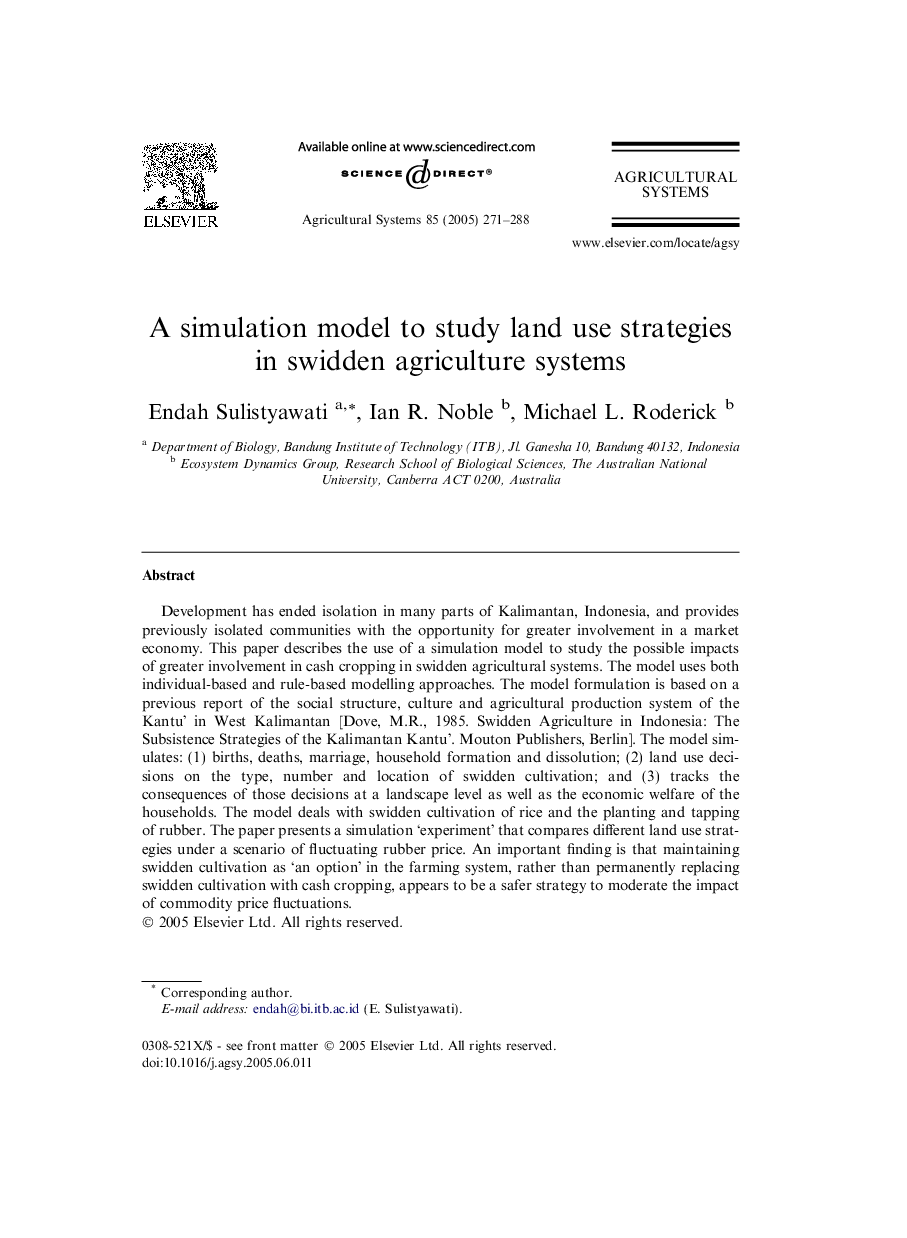| Article ID | Journal | Published Year | Pages | File Type |
|---|---|---|---|---|
| 9469187 | Agricultural Systems | 2005 | 18 Pages |
Abstract
Development has ended isolation in many parts of Kalimantan, Indonesia, and provides previously isolated communities with the opportunity for greater involvement in a market economy. This paper describes the use of a simulation model to study the possible impacts of greater involvement in cash cropping in swidden agricultural systems. The model uses both individual-based and rule-based modelling approaches. The model formulation is based on a previous report of the social structure, culture and agricultural production system of the Kantu' in West Kalimantan [Dove, M.R., 1985. Swidden Agriculture in Indonesia: The Subsistence Strategies of the Kalimantan Kantu'. Mouton Publishers, Berlin]. The model simulates: (1) births, deaths, marriage, household formation and dissolution; (2) land use decisions on the type, number and location of swidden cultivation; and (3) tracks the consequences of those decisions at a landscape level as well as the economic welfare of the households. The model deals with swidden cultivation of rice and the planting and tapping of rubber. The paper presents a simulation 'experiment' that compares different land use strategies under a scenario of fluctuating rubber price. An important finding is that maintaining swidden cultivation as 'an option' in the farming system, rather than permanently replacing swidden cultivation with cash cropping, appears to be a safer strategy to moderate the impact of commodity price fluctuations.
Related Topics
Life Sciences
Agricultural and Biological Sciences
Agricultural and Biological Sciences (General)
Authors
Endah Sulistyawati, Ian R. Noble, Michael L. Roderick,
